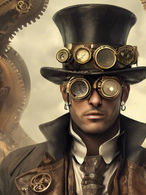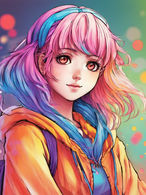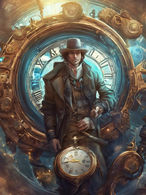Choosing Uplifting Stories: The Shift in Literature
- Holly Kelly

- Aug 23
- 4 min read
Updated: Sep 23

Books are more than just entertainment—they're cultural touchstones that reflect who we are and what we value. For centuries, literature has mirrored society and shaped it. From the moral lessons in fables and religious texts to the social critiques in novels like To Kill a Mockingbird and Les Misérables, stories have influenced how we think about right and wrong.
But in recent decades, the tone of popular literature has shifted. Bestselling novels now often feature darker plots, morally ambiguous heroes, and explicit material that was once considered taboo. This raises an important question: what does the content of today’s books reveal about our culture? More personally, what does it mean for the stories we choose to bring into our homes?
The Data Behind the Trend
The claim that literature has grown darker isn’t just opinion—it’s supported by data.
The Pew Research Center (2021) reported that younger readers are gravitating toward “gritty realism” and morally gray heroes, rather than traditional protagonists defined by clear virtue.
Publishers Weekly documented a 34% increase in dark romance and horror titles published between 2010 and 2020. Many of these prioritize obsession, betrayal, and violence over redemptive arcs.
A Bowker market analysis revealed that books labeled as “dark” or “twisted” have climbed the charts across online retailers, reflecting consumer demand for themes that were once considered fringe.
This shift aligns with broader cultural changes in media. The rise of anti-heroes in television shows like Breaking Bad, You, and Game of Thrones mirrors what we’re seeing in publishing: audiences are increasingly fascinated by flawed, dangerous, or even villainous leads.
Why It Matters
Stories shape us in ways we don’t always recognize. Neuroscience studies confirm that the brain reacts to fiction much like it does to real experiences. When a reader spends hours immersed in the life of a violent or manipulative character, their empathy for such behavior can shift.
A 2020 American Psychological Association study warned that repeated exposure to violent or explicit material can gradually desensitize readers, lowering emotional sensitivity to harmful behaviors. While adults may feel confident distinguishing fantasy from reality, adolescents and young adults—who are prime consumers of many bestselling titles—are especially impressionable.
Consider the Difference
Classic children’s literature, such as The Chronicles of Narnia, presents a clear moral framework: good vs. evil, courage vs. cowardice, selflessness vs. selfishness. In contrast, some of today’s popular YA and adult titles depict relationships marked by manipulation, obsession, or cruelty as “romantic” or even aspirational.
The concern isn’t about banning or censoring but about recognizing that what we normalize in fiction can ripple into how we think, talk, and act in the real world.
From Escape to Endorsement
It’s natural to want stories filled with suspense, passion, or danger. Literature has always offered an escape. But there’s a growing difference between stories that portray darkness and those that endorse it.
For example, Gothic literature of the 19th century often depicted horrifying events, but its underlying themes emphasized caution, redemption, or the triumph of light over darkness. Today, some modern novels invert this balance: darkness becomes not just the setting but the celebrated destination.
That subtle shift matters. When cruelty, betrayal, or obsession are glamorized without consequence, it signals that the line between storytelling and moral approval has blurred.
The Case for Uplifting Alternatives
Yet the story doesn’t end in decline. Alongside the surge of darker books, there’s a counter-movement of readers hungry for uplifting, inspiring stories—books that thrill without corrupting.
Goodreads surveys show a rising interest in “clean fantasy” and “wholesome romance,” with thousands of new shelves created for these categories since 2018.
Family-friendly review sites report spikes in traffic as parents and young readers seek guidance on what books align with their values.
Independent publishers are beginning to market “clean reads” explicitly, filling a gap in the marketplace for audiences who want excitement without gratuitous darkness.
These aren’t bland or watered-down books. Many offer just as much magic, mystery, and intrigue as their darker counterparts—but they anchor their narratives in courage, loyalty, or sacrificial love.
The Power of Choice
At the end of the day, every reader makes a choice. The novels on our nightstands and the series on our shelves aren’t just entertainment—they’re investments into our worldview.
Do we want to normalize deception, cruelty, or obsession as entertainment?
Or do we prefer to nurture imagination with stories that leave us better, not bitter?
It’s not about rejecting all complexity or demanding that every hero be flawless. Realism has its place. But when the cultural pendulum swings too far toward glorifying darkness, readers have to ask: am I being shaped by my books, or am I choosing books that reflect the kind of life I want to live?
Where to Begin
For those who love the paranormal, fantasy, or romance genres but want to avoid being dragged through gratuitous explicit content, there are resources designed to help. You don’t have to sift through endless reviews or risk buying a book that surprises you with material you didn’t want.
Subtly curated lists and communities already exist, pointing readers toward novels that are imaginative without being exploitative, thrilling without being grotesque, romantic without being degrading. They prove that clean doesn’t mean boring—it means boundaries.
Here at CleanParanormal.com, we are dedicated to helping readers discover paranormal and fantasy books that balance excitement with integrity. For families, teachers, or individuals who want stories that inspire rather than desensitize, we are designed as a tool for choosing wisely in a marketplace that often blurs moral lines.
The Takeaway is Simple
The stories we consume matter. They don’t just fill our shelves; they shape our souls. As readers, we hold the power to support books that reflect the world we want to create. Isn’t it time we chose better stories?
The Future of Literature
As we look ahead, the landscape of literature continues to evolve. We can actively shape it by choosing stories that resonate with our values. By supporting authors who prioritize integrity and creativity, we can encourage a literary world that uplifts rather than diminishes.
Let’s celebrate the authors who craft tales filled with hope, adventure, and moral clarity. Together, we can create a reading culture that values uplifting narratives.
So, what will you choose to read next? The power is in your hands.



























A very well written article on not only the moral decline of the western world, but also the sparks of revolution springing up from coast to coast. As an avid reader, I find myself greatly disturbed by the books young people seem to be flocking to in droves. I’m so thankful to see that a significant shift is taking place.